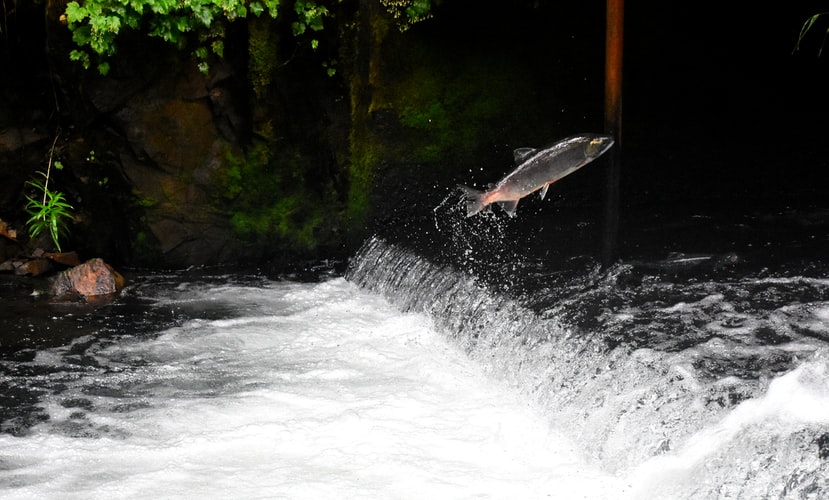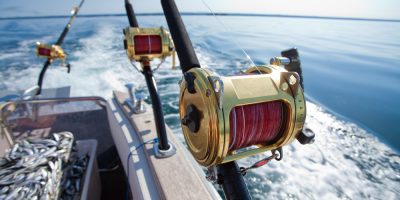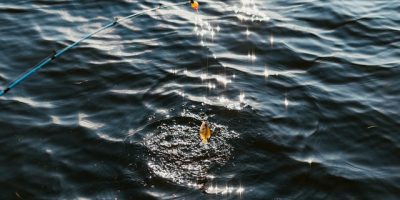When you talk to fishermen who specialize in salmon species about trolling with downriggers, almost all of them will have a setup they will swear by. For the past 15 years of salmon fishing, everything has already been revealed. Each guide will have its own unique sauce when it comes to trolling for salmon with downriggers. However, how can you identify which actually works and which is simply nonsense? It is crucial to set the record straight on the best way to troll salmon with downriggers. The following are the techniques and tips which have aided expert anglers to catch tons of fish over the past decade. It is crucial to know how to use downriggers for salmon efficiently to catch all salmon types in any situation.
How do Downriggers Work? – how to use downriggers for salmon

Using downriggers is pretty basic. They give you the ability to sink your trolling rig and tease them to a specific area by connecting the rig to the mainline. The line is weighted usually consists of a wire with a 5 to 10-pound weight on its end. Just several distances above, a clip can hold your fishing line and provide enough pressure to lower down with the weight. Once a fish bites your lure, the clip gets freed of the weighted line so you can haul the fish. The downrigger works excellently for salmon and other deep-dwelling fish species, such as groupers.
The weighted line can either be retrieved by a manual crank or with an electric motor. Downrigger that utilizes electric motors are pricier than the manual ones.
Why Use Downriggers? — how to use downriggers for salmon
Before getting into the particulars of trolling for salmon utilizing downriggers, it is important to discuss first why they should be used in the first place. If you’re still undecided about getting a downrigger, the following points can convince you.
Accurate
These are extremely accurate. No guessing games as to where your lure is at. Downriggers utilize exact measurements as to how deep your lure should be. This provides you with the ability to get your trolling lure exactly where it should be.
Affordable
Downriggers are not a huge investment. A majority of downrigger setups will only cost you $100, and they are long-lasting. And cranking the downrigger is an affordable fishing device.
Flexibility
A downrigger provides you extra flexibility. Downriggers make way for you to get your bait close to the salmon beyond the reach utilizing divers or other weight arrangements. If you’re fishing for a huge salmon that lives 80 feet down, you won’t get any trouble getting your lure to such depths. It should also be noted that downriggers are a great choice for other types of fish, such as yellowfin tuna and lake trout.
Downrigger parts– how to use downriggers for salmon

Downriggers are effortless to use and have a streamlined design. A spool will hold a long length of downrigger cable up to 600 feet, which currently utilizes mostly stainless-steel wire. The cable begins on the spool and runs the length of the boom in a pulley.
The cable typically goes over the pulley and is affixed at the end of the cable at the downrigger’s weight. Weights can come in various shapes and sizes, but the average is a 10-pound cannonball. Fastened to the cable either to the weight or not far from the weight is the downrigger fastener. This is the place where you attach the fishing line when it is time to cast the bait or lure. The downrigger mounting is affixed to your boat and the downrigger allowing you to remove the downrigger when it is not in use.
Styles of Downriggers– how to use downriggers for salmon
Downriggers are available in both manual and electric types. These two different models have their advantages and disadvantages. Metal downriggers are more compact and doesn’t need power. They are also more affordable.
The disadvantage is that you had to use manual power to get them up, which can be a bit of a hassle; there are some good downrigger brands on the market, so be sure to check them out.
On the other hand, electric downriggers will require a power source and wiring and will cost more and utilize moving parts, which means extra repairs. However, it doesn’t require manual power to raise them. Thus, it is easier on the angler since the downrigger can be adjusted with a switch’s flip. The angler is free to retrieve the lines and allows it to move quickly and speedily to get the downrigger weight out of the way when struggling with a fish, especially when they are angling alone on a boat deck.
Another factor is getting a downrigger with a large enough boom to keep your lines free from the boat during turns. It is crucial to have air to mount your downriggers so that you can retrieve the downrigger to be clipped to attach lines and have a deck weight storage space to stow the downriggers when not in use.
How-to-Use Downriggers: how to use downriggers for salmon
Put your downrigger on the downrigger bracket and position the boom in such a way that it points parallel to the port or starboard side of the watercraft. Fasten the downrigger weight at the end of the cable and submerge it in the water. Affix the downrigger clip to either the cable or weight.
How to use downriggers for salmon? Put the boat in motion and create a forward movement. Utilize the setup you have chosen. Make sure there are 5 to 25 feet of line. Fasten the line to the downrigger clip. Release the spool reel but keep your thumb on the spool and lower the downrigger slowly to the desired depth making sure your reel doesn’t recoil.
Depending on the downrigger size and style, as well as the speed at which you troll, the downrigger cable can extend at an angle into the water. This is called blowback. With enough experience, you will learn how much cable to free to get to the exact depth that you want.
Blowback
One way to find out the amount of blowback is to position the trolling speed and drop the weight until it reaches the bottom. How to use downriggers for salmon? Check out the depths your downrigger stays and compare it to the actual depth to determine the blowback ratio. Another option is to look at your fishfinder. It will often indicate your downrigger balls if they are still within the area of the fish finder.
Make sure you engage the reel. Put the rod on the rod holder and slowly loosen the slack in the line until it is gone, and the rod has enough tension to create a parabolic arc. How to use downriggers for salmon? When a salmon bites the bait and becomes hooked, it will usually release the line free of the clip. The bending rod will act to minimize any slack because of the strike when it eventually straightens.
With enough experience, you will learn exactly where to put the downrigger clip to set the line so that there is sufficient tension to allow you to load the rod and eliminate the slack without popping out the clip. It should happen in such a way that it is not so deep into the clip that that salmon cannot easily move it out or, worse yet, damage the line when striking. A fisherman might accidentally remove the line out of the clip.
Salmon strikes
How to use downriggers for salmon? You are now ready to troll at your desired speed. Over time many strikes are occurring when the boat is turning. How to use downriggers for salmon? Once the boat turns, the inside line will slow down as the outside speeds up. This motion is erratic and seems to encourage the strike. The strike can happen anytime, so be vigilant when the boat turns.
How to use downriggers for salmon? The general agreement is it is the best time to troll with the tide, but the wind strength and other variables should also be factored in. Another widely accepted truth is that fishing is often best two hours before or through two hours after a tide change.
Downrigger Tackle- how to use downriggers for salmon
How to use downriggers for salmon? Tons of baits can be used to attract salmon. The most popular of which is herring. The herring fish can be rigged whole or plug cut, and there are many strategies in which anglers can rig herring. The common strategy is that these fishes enjoy a slower wider spin while the coho species enjoy fast, tight spins. The whole herring can be rigged utilizing a bed to produce this spin, while plug cuts are used in a compound angle to give the desired spin. How to use downriggers for salmon? It is recommended to brine your baits since they will last longer and also look better. You can also add some scent, and there are a wide variety of scents that have proven their utility.
Popular baits
Other well-known baits will include hoochies that replicate plugs. You can also utilize trolling spoons and flies. Baits with UV and glow are the best options, especially when fishing at deeper depths below 60 feet. Adding scents will also be helpful.
Overall, anglers will be positioning the flasher ahead of the baits to make vibration and provide action to the baits. Well-known manufacturers of flashers include companies like hotspot and Pro troll. The choice of flashers is nearly endless on the market these days, and your personal preference and situation will influence your purchasing decision.
Rods
Rods must have a soft tip and a solid butt section. Rods need to be soft enough to allow salmon to take the bait and turn without too much resistance. But the rod should be tough enough at the bottom half of the water to allow an angler to manipulate a ten to 40-pound struggling fish. Often there will be obstacles like the rods of other anglers and outboard motors that are navigating around. For most fishermen using the casting style rods, they prefer rods that are 7 to 9 feet in length and have a rating of 10 to 25 pounds. Some brands make good ones, although many manufacturers make good quality rods.
Reels
It is crucial that reels have a strong, smooth drag and can manage of hundred meters of 50-pounds of test braid. The reel part will receive the force when fishing for salmon, so get the best your budget can afford.
The rate used in the mainline in a 50-pound test braid is an excellent choice. A 50-foot top shot is attached to the braid, which allows for a quiet presentation and gives just a stretch, which minimizes pulled hooks.
Leader material
The leader material in the pound test is your personal choice. A typical leader length is usually 2 to 4 feet. If you’re looking for a flasher to impart good action on the bait, a shorter or stiffer leader will provide more impact to your lure. Place the gear in the water and switch on the motor at trolling speed and see what the action will be like. Make adjustments as needed to get enough action but not so much that everything becomes erratic.
Finding Salmon- how to use downriggers for salmon
King Salmon lives in water depths often at least 60 feet down under and is usually closer to the bottom than the surface. Coho fish live in the upper parts of the water column, typically at 80 feet. Since both are rushing for bait in saltwater areas, they typically hang around pinnacles, kelp beds, and similar areas. It is important to note that certain areas will receive trolling better depending on the tide.
Search for lines, streams, and other known fruitful spots in the past. One advantage of trolling is you can cover a wider water area while you’re moving to discover fish while you’re still fishing.
Final thoughts

Angling is an exciting sport and adventure. Salmon fish have a particular behavior that makes it susceptible to being caught with downriggers. It is crucial to know how to use downriggers for salmon if you are targeting this fish. Catching a salmon is a rewarding prize. Not only will you get an Instagram-worthy trophy fish, you will also have a good meal.


